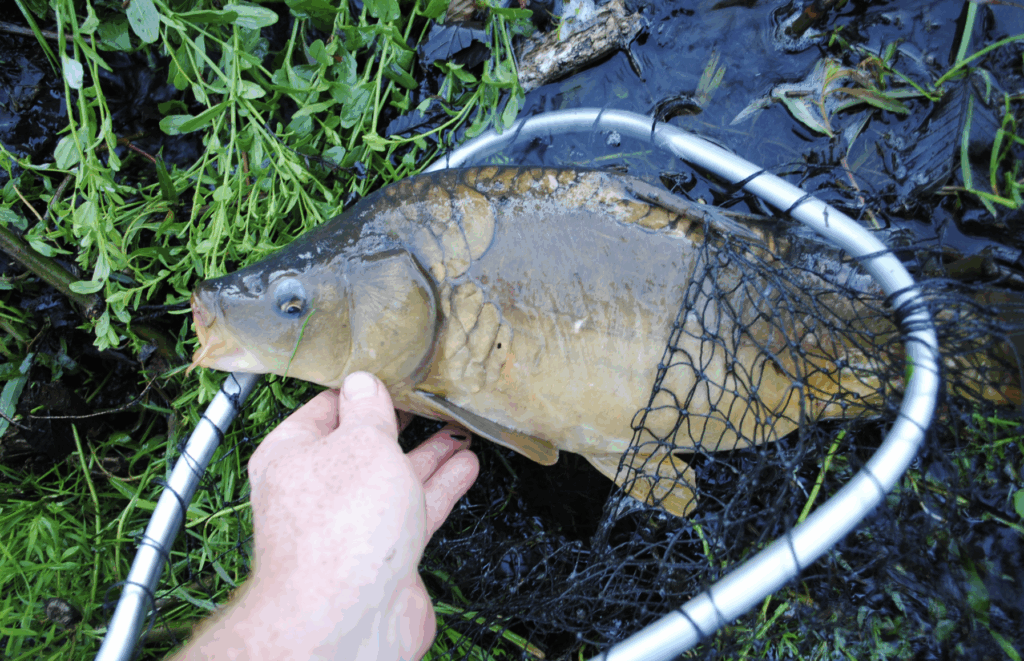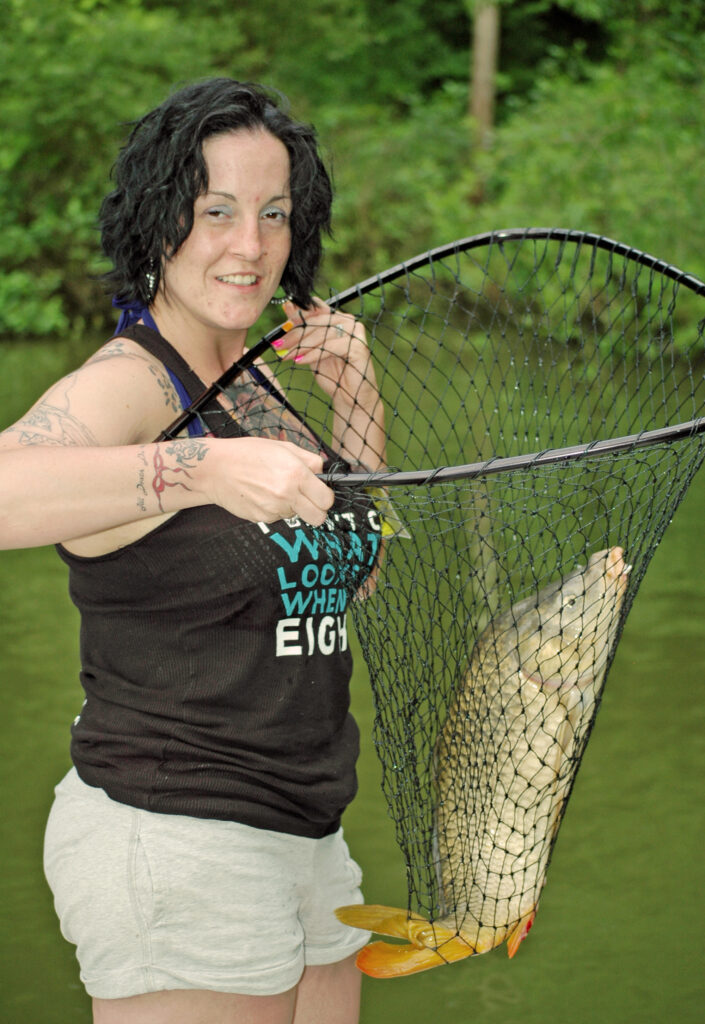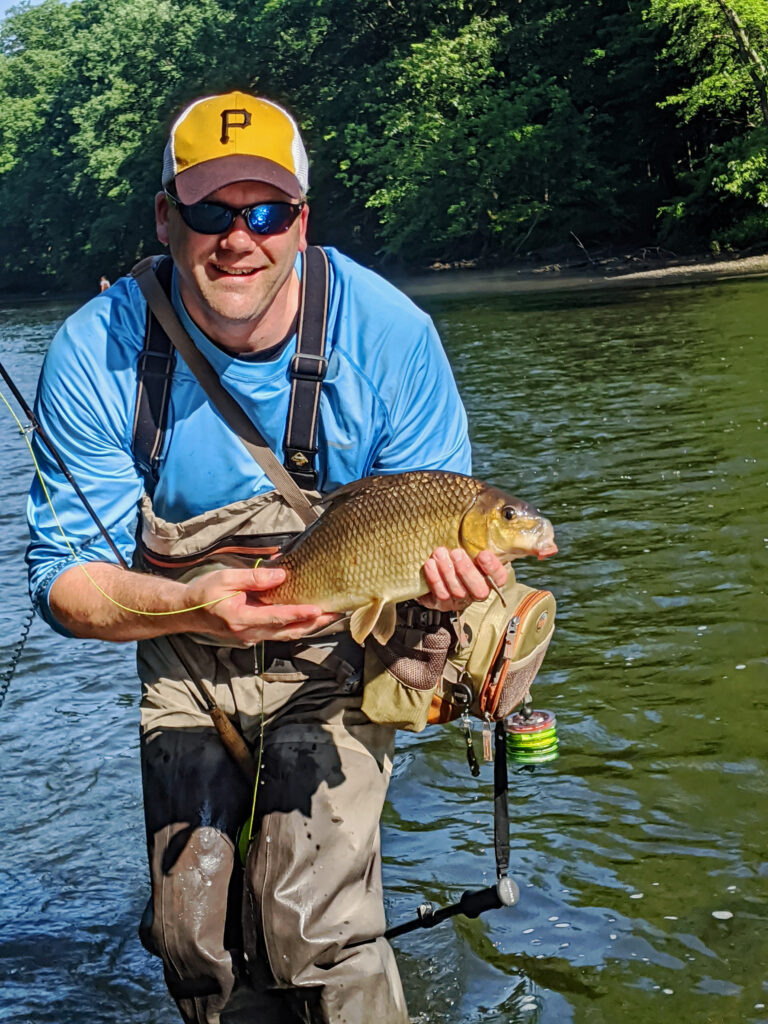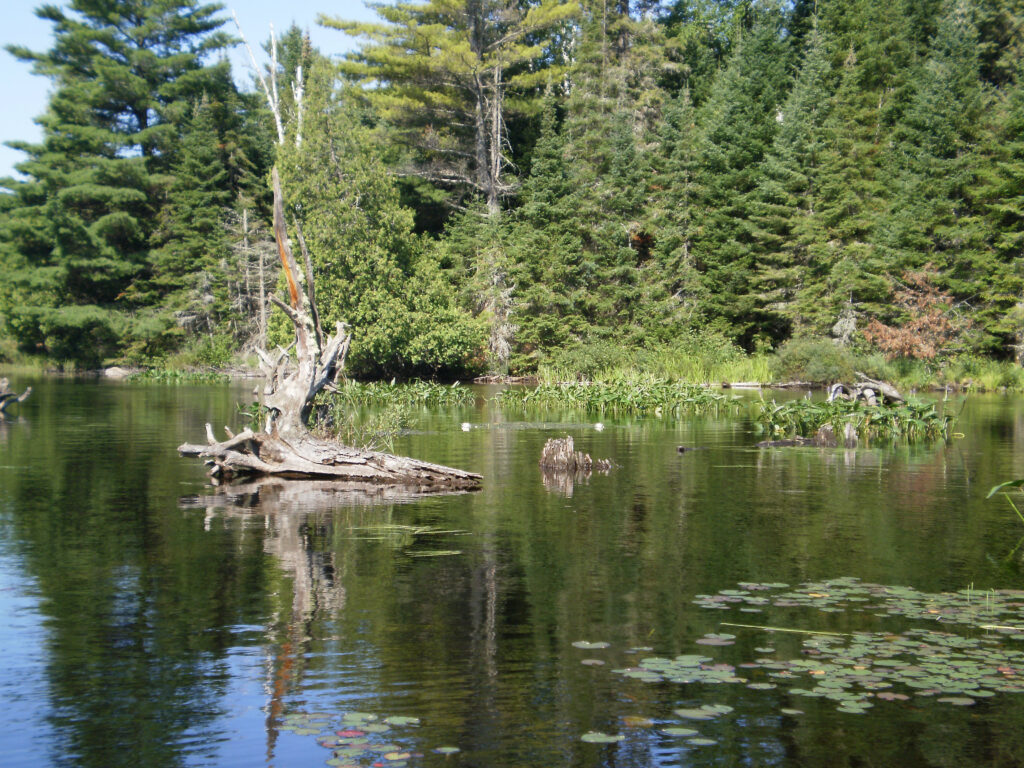Fly Fishing for Carp: An Introduction to Carp on the Fly

For most freshwater fly anglers, bass, trout, and steelhead are the most sought-after species, but they are not the only freshwater options. Most of us dream of trips for exotic species, but what can we do in the meantime? The best opportunities involve adapting our skills to lure common species with flies that are usually ignored by fly fishers. Carp are among the species that fall into that category.
Though carp were cultivated as a food source in Asia for 4,000 years and in Europe for 2,000 years, they were not in the waterways of the United States until they were introduced from Germany in the mid-1800s. Some carp, including bighead, black, grass, and silver carp were not even in the States before the 1970s. They were imported by enterprising business people who were familiar with the value of fish as a food source in Asia and Europe.
For better or worse, carp proved so adaptive that by 1900, most state fish commissions determined the population of this invasive species needed to be monitored and controlled. Carp are hearty fish that do not die easily. They are highly tolerant of pollution, and therefore, even when the population of native fish species is diminishing, the carp thrive.
These intrusive fish can present a major, negative effect on native species. Instead of merely feeding on insect larvae as they emerge – like bass, trout, and most native freshwater fish – carp will often uproot underwater vegetation to reach hidden larvae. Consequently, clear water can be replaced by muddy, turbid water, making it more difficult for the native, freshwater fish to locate food. Reduced underwater vegetation also impacts the spawning of native species, by reducing the number of breeding areas and natural habitats in which to hide and protect eggs from predation.
The carp’s bony structure and unappealing appearance haven’t helped their reputation either. Few people would argue that carp aren’t exactly pretty fish. And although they’re edible, the carp’s bottom-feeding habits often give their meat a muddy taste. Additionally, they may accumulate toxins and heavy metals in polluted waters.
Despite their invasive nature and homely looks, though, carp offer some benefits for anglers. They’re abundant, can tolerate high water temperatures, and can live in even heavily polluted waterways. No matter where you live, you probably have a fishable carp population nearby to target.
The Cagey Carp
Anyone catching and removing carp from waterways, “within the lawful limitations of each state,” can consider themselves benefactors to the native species inhabiting the same waters. Fly fishermen, in increasing numbers, are intrigued by the challenge of catching these strong, heavy fish. Coaxing a carp to accept an offering is not easy, but once hooked, they offer impressive strength that will put a pronounced bend in a heavyweight fly rod.
Wise fly fishers should think of the number “20” when considering the purchase of a fly rod to use when targeting these fish. The average lifespan of a carp is 20 years. There’s a better-than-average chance the carp will be at least 20 inches long. A carp exceeding 20 pounds would not be unusual. You can bet a hooked carp knows how to use its big, broad body and muscular power to battle predators!
They may appear somewhat lazy and dismissive, but they are surprisingly more wary than most expect. They must be approached as cautiously as a person would advance toward a wary brown trout. Any substantial wake generated by a careless angler will spook them, and once frightened, they emit a warning chemical that all nearby carp sense.

Flies for Carp
Large minnows and other baitfish of substantial size are seldom eaten by carp, which means that for the most part, fly fishers can rule out the use of large streamers when fishing for them. Small nymphs are generally the rule for carp.
While it’s said that carp will eat almost anything, that doesn’t mean they are easily fooled. Carp naturally seek insects, crustaceans, mollusks, and fish eggs, so concentrate on imitating those food sources. Also, remember that bait fishermen catch carp with catfish dough, corn kernels, maggots, and worms. Flies tied to mimic these baits will also catch carp.
The fly I favor when fishing in slow to medium flowing water is a smallish-sized Woolly Bugger. Olive green seems to work best for me, but a dear friend of mine seems to catch them at will while using small buggers that are black, white, tan, or yellow.
Another favorite of mine is an old fly from the early 1900’s, called a Picket Pin, which was created in Montana, and intended to catch trout. When tied in small sizes, it also works well for me. Go figure!
Of course, small nymphs can work as well as anything, but they must be weighted enough to permit hugging the bottom. Snags with bottom debris are to be expected when targeting carp, but you have to get the flies down to where the fish are feeding.

Leaders and Tippets
Use of a heavy, leader and 2X to 5X tippets is advised. A good rule of thumb for novice fly fishers accepting the carp challenge is to use the heaviest tippets possible until developing a feel and skill to sense when to release tension. That’s pretty basic advice, but most anglers do not appreciate the fight a carp is capable of providing until they have battled a few of them. Typically, carp are not spooked by a heavy tippet.
Of course, many fly fishers enjoy the challenge of fighting and landing big fish with light equipment. Expect to experience broken lines and an equal number of broken hearts, if that’s your game.
Unfortunately, most of the small flies preferred by carp will have tiny eyelets, which presents challenges to attaching the fly to a strong tippet. Knots that require threading the line through the eyelet more than once will be difficult to tie, if not impossible. For that reason, the Orvis knot, uni-knot, and loop knot are among my favorites. They are the easiest to thread, grant most flies a natural appearance, and are reliable during the battle.

Carp Tactics
Don’t waste time looking for carp in fast water. Casting offerings downstream and stripping the line against the current will seldom lure a carp. They prefer standing water or deep pockets in lazy currents.
Remember, they are bottom feeders that do not shy away from muddy, murky water. A carp is perfectly content to scrounge for food in the bottom sediment and rarely feels the need to chase a food source.
If presented with an opportunity to fish for carp from directly overhead, such as from a high bank or bridge abutment, just drop the fly into a cluster of them and gently move it along the bottom. Try not to bounce the offering more than an inch off the bottom as it is moved.
Present weighted flies upstream, and allow them to move slowly along the bottom, toward waiting fish. Concern for drag and matching the current’s speed doesn’t seem to be as crucial as it is when fishing for trout.
A carp’s bite can be more difficult to sense than even that of a trout. Carp routinely suck sediment and debris with their food and eject non-nutrients. Many carp have ejected flies without the fisherman even realizing the offerings had been accepted.
Strike indicators are a tremendous aid in detecting subtle strikes. This is especially true when accessing slow-moving, deep water. Don’t be afraid to use them. And if the indicator pauses, twitches, or does anything unusual for even an instant, set the hook!
Fly fishing for carp is a fun pursuit for any anglers seeking a new challenge. They’re not the typical target for most fly fishers, but they are hard fighters that can be tough to fool, which makes it very rewarding to land one. Though not indigenous to the United States, carp are now plentiful throughout waterways all across the country. You don’t have to travel to their native waters in Asia or Europe to catch them. And when you hook one, prepare for a surprise and hold on tight!
Have a fly fishing question you’d like answered? Drop us a line at info@darkskskiesflyfishing.com! If we use your question in a blog post or in the newsletter, we’ll send you a FREE fly box with a dozen of our favorite nymphs and dry flies!


